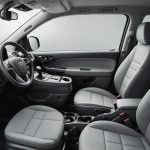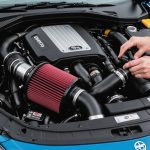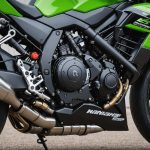Understanding Adaptive Cruise Control Sensors
Adaptive Cruise Control (ACC) is an advanced driver-assistance system that automatically adjusts a vehicle’s speed to maintain a safe distance from the vehicle ahead. Sensor functionality is the cornerstone of ACC, allowing the system to detect and respond to traffic conditions. The technology comprises various sensors, including radar and cameras, which work collaboratively to gauge the distance and speed of other vehicles.
Winter weather conditions can significantly impact the performance of these sensors. Snow, ice, and road grime can obscure sensors, leading to a reduction in their accuracy and reliability. For instance, radar sensors, crucial in adaptive cruise control systems, may misinterpret snowflakes as obstacles, affecting the system’s responsiveness. These conditions can cause the system to either fail to engage or become overly cautious, which may disrupt the driver’s normal driving experience.
Additional reading : Ensuring Safety: The Critical Role of Child Seat Placement in Minivans During Side Impact Collisions
Ensuring sensor functionality during winter is critical for maintaining safety on the road. Drivers can mitigate sensor impairment by regularly cleaning sensor areas and ensuring their vehicle’s ACC is calibrated correctly. Understanding how weather impacts sensor performance helps drivers adjust their expectations and driving habits, allowing for a safer journey even in adverse conditions. This proactive approach ensures that adaptive cruise control remains a beneficial safety feature year-round.
Common Winter-Related Issues with Adaptive Cruise Control Sensors
Winter months can pose significant performance challenges for adaptive cruise control (ACC) sensors. These sensors, pivotal for maintaining consistent speed and distance from other vehicles, often face hurdles as winter conditions deteriorate.
In parallel : Mastering Airbag Sensitivity in Minivans: Essential Tips for Enhanced Safety and Protection
Among the primary sensor issues in winter is the accumulation of snow, ice, and even road dirt on sensor surfaces. These elements can obstruct and distort sensor signals, leading to delays or inaccuracies in the vehicle’s response. This often triggers a cascade of safety concerns, as the vehicle might struggle to adjust speeds appropriately or maintain safe distances, vital for preventing collisions on slippery roads.
Drivers might notice system warnings and alerts about these malfunctions, prompting for manual intervention. Recognising these warnings early is crucial. It’s advisable for drivers to routinely check and clear any debris from sensor areas to maintain system integrity. Furthermore, understanding the performance challenges faced by the sensors during adverse conditions allows for a more cautious driving approach.
Serious attention to these common winter issues ensures that automobile safety is not compromised by environmental factors. With proactive measures, drivers can minimize disruptions caused by adverse weather, thus promoting a smoother and safer driving experience.
Best Practices for Maintaining Adaptive Cruise Control Sensors in Winter
As winter approaches, sensor care becomes crucial for maintaining the efficiency of your vehicle’s adaptive cruise control system. Regular inspections ensure that sensors remain in top condition, providing reliable performance even in cold weather.
Importance of Regular Inspections
Conducting frequent checks is essential to detect any accumulation of ice, snow, or debris that can hinder sensor functionality. If a problem is identified early, it’s easier to ensure that your system continues to work effectively, enhancing winter vehicle preparedness.
Cleaning Sensors: A Step-by-Step Guide
- Turn off the vehicle. Safety first—always switch off the engine before starting any maintenance.
- Remove debris gently. Use a soft cloth to wipe away any ice or grime gently.
- Avoid abrasive materials. Steer clear of harsh scrubs that can scratch sensor surfaces.
Protective Measures Against Winter Weather
To protect your sensors from harsh winter conditions, consider:
- Using a car cover: This shields the entire vehicle from snow buildup.
- Parking indoors when possible: A sheltered space provides better protection against the elements.
- Regularly applying a protective coating: Specialized products can help minimize accumulation and damage from road salt and grit.
By embracing these maintenance tips, drivers can ensure sensor performance is robust throughout the winter months, thus sustaining optimal sensor performance.
Troubleshooting Adaptive Cruise Control Sensors in Winter
Winter conditions can be merciless, particularly when it comes to adaptive cruise control systems. When dealing with sensor diagnostics during this season, identifying issues promptly is essential. Troubleshooting techniques begin by understanding typical problems such as ice or snow accumulation, which can obstruct the sensors and affect the cruise control system functionality.
First, examine whether sensor diagnostics indicate any alerts. A signal light might illuminate on your dashboard if there’s a sensor obstruction. If adaptive cruise control features are not responding or are sluggish, the sensors might need a closer look. Ice, snow, and even road salt can obscure their view.
Common troubleshooting techniques to resolve these issues include manually clearing debris from the sensor area and checking connections for possible corrosion due to moisture. Regular cleaning during winter months should be part of your maintenance routine to avoid performance disruptions.
Sometimes, the visible issues are just the tip of the iceberg. When the problem persists despite applying basic troubleshooting techniques, it becomes crucial to seek professional assistance. Experts have the tools to conduct in-depth sensor diagnostics and propose the most effective problem resolution strategies.
By addressing these concerns with the right mix of preventative care and professional help, adaptive cruise control systems can consistently perform even in the harshest winter conditions.
Driving Safety Precautions in Winter Conditions
Navigating winter roads requires enhanced vigilance and specific adaptations. One significant aspect involves Winter Driving Safety with features like adaptive cruise control. Whilst this technology offers convenience, it demands precautionary measures, especially in winter. Snow-covered roads might impair sensors, necessitating manual speed adjustments to maintain safe driving practices.
Understanding how to adjust one’s driving habits is also crucial. Reduced visibility and slippery surfaces often call for greater stopping distances. It’s beneficial to increase the distance from the vehicle ahead, allowing more time to react to sudden changes. Additionally, slower speeds can help maintain control on icy patches, enhancing overall Winter Driving Safety.
Staying aware of sensor performance is as vital as any other precautionary measures. Whether it’s the buildup of snow or ice, sensors might deliver inaccurate readings, making it crucial to monitor their functionality constantly. A simple check for obstructed sensors before hitting the road can prevent potential mishaps and ensure that the adaptive features of the car operate as intended.
To sum up, safe winter driving involves a blend of vigilance and adaptability. By incorporating these safe driving practices, you can significantly reduce potential hazards and navigate winter roads with more confidence.











